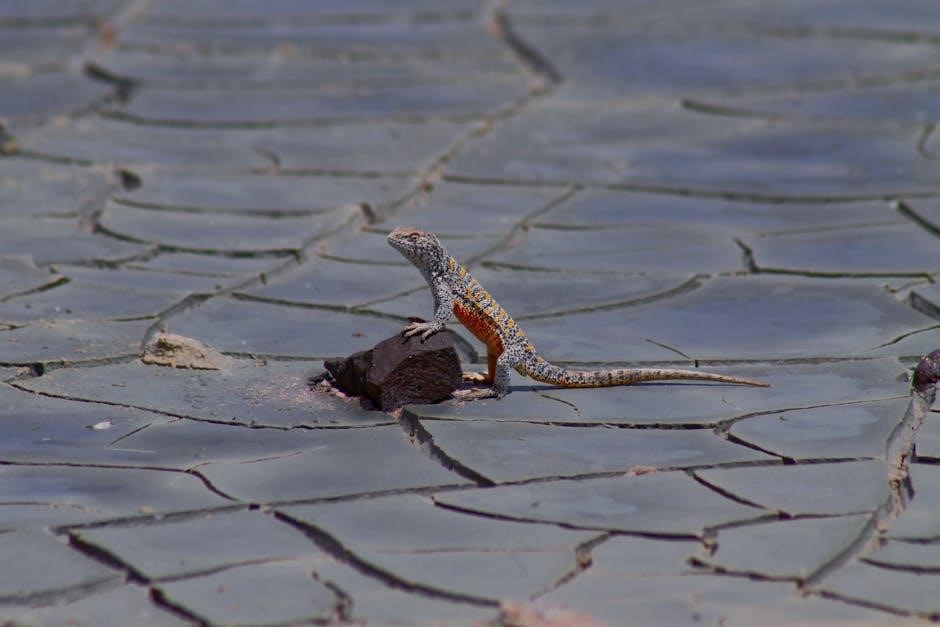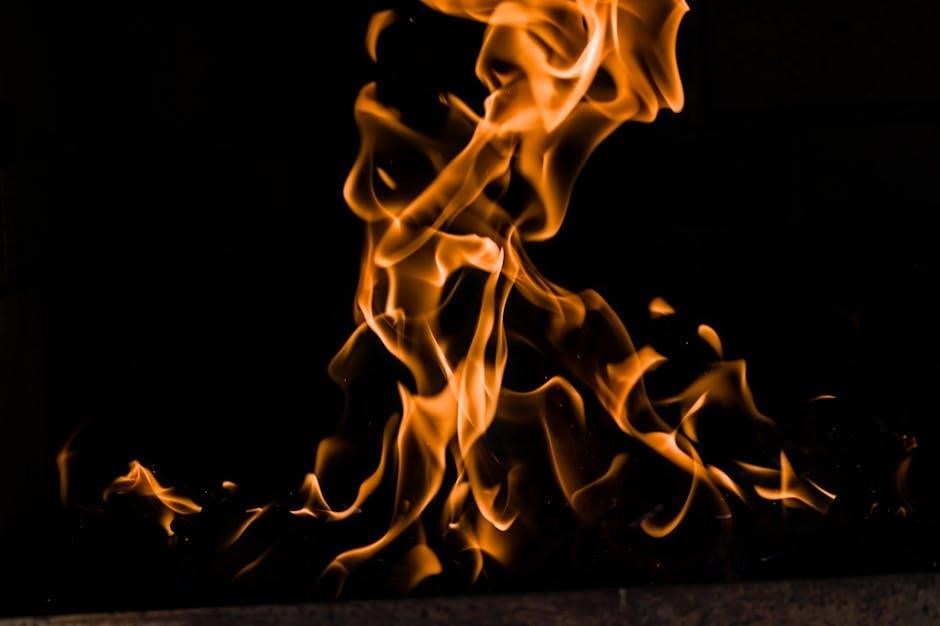Sublimation is a vibrant printing technique using heat to transfer designs onto materials. This guide explores essential tools, optimal settings, and best practices for achieving professional results.
1.1 What is Sublimation Printing?
Sublimation printing is a digital printing technique that uses heat to transfer vibrant, full-color designs onto materials like fabric, ceramics, and metal. The process involves printing designs onto sublimation paper with sublimation ink, which is then heated to convert the ink into gas. This gas infuses into the material, creating durable, photorealistic images. It’s ideal for customizing products with intricate designs.
1.2 Importance of Heat in Sublimation
Heat is crucial in sublimation as it activates the conversion of sublimation ink from solid to gas, enabling it to bond with the material. Proper temperature ensures vibrant colors and durability, while incorrect heat can cause fading or poor adhesion. Consistent heat press settings are essential for achieving professional-quality results in sublimation printing projects.

Essential Materials and Tools for Sublimation
Key materials include a sublimation printer, sublimation ink, heat press, and sublimation paper. Additional tools like a computer, design software, and protective gloves ensure a smooth process for creating vibrant designs.
2.1 Sublimation Printer and Ink Requirements
A sublimation printer requires specific sublimation ink and compatible inkjet paper. Modified inkjet printers like Epson EcoTank or Sawgrass SG500/SG1000 are ideal. Sublimation ink contains dyes that change from solid to gas when heated, ensuring vibrant transfers. Use high-quality, 100-120 gsm sublimation paper designed to handle ink loads without bleeding. Adjust printer settings for color profiles and print quality, and ensure proper maintenance for optimal performance.
2.2 Heat Press Machine: Types and Functions
A heat press is essential for transferring sublimation prints. Common types include clamshell, swing-away, and drawbridge presses. Each offers varying heat distribution and pressure control. The machine applies precise temperature (typically 350-400°F) and pressure to sublimate ink onto materials. Ensure even heat distribution to avoid ghosting. Proper alignment and preheating are crucial for professional results. Choose the right press based on material thickness and size for optimal sublimation.
Optimizing Sublimation Printer Settings
Adjusting printer settings is crucial for vibrant sublimation results. Focus on color correction, calibration, and selecting the right paper quality. Ensure high-resolution printing and proper ink flow for optimal transfers.
3.1 Color Correction and Calibration Tips
Ensure vibrant prints with proper color correction and calibration. Use ICC profiles for consistency and adjust settings for accurate hues. Perform manual color correction if needed. Regularly calibrate your printer to maintain color accuracy. Use test prints and color charts to verify results. Adjust brightness and saturation for optimal vibrancy. Always check for firmware updates and consult your printer’s manual for specific calibration guidance.
3.2 Choosing the Right Sublimation Paper
Selecting the right sublimation paper is crucial for vibrant transfers. Opt for paper with a smooth, coated surface to ensure proper ink adhesion and even transfer. Consider weight and thickness for different materials. Lighter papers suit fabrics, while heavier options work best for hard surfaces. Always check compatibility with your printer and ink. High-quality papers minimize ghosting and ensure crisp designs.

Understanding Heat Press Settings
Understanding heat press settings is key to achieving vibrant, durable sublimation results. Proper temperature, time, and pressure ensure optimal transfers for various materials and designs.
4.1 Temperature and Time Guidelines
Optimal temperature for sublimation ranges from 350°F to 400°F, with pressing times between 180 to 300 seconds. Higher temperatures and longer durations suit thicker or polyester-rich materials. Adjust settings based on material thickness and fabric type for vibrant, long-lasting results. Always pre-press to remove moisture for consistent transfers.
4.2 Pressure and Heat Distribution Techniques
Even pressure is crucial for consistent sublimation results. Use a heat press with solid platens for uniform heat distribution. Apply 3-4 kg/cm² pressure, adjusting based on material thickness. Pre-pressing removes moisture, ensuring even transfer. Proper alignment and balanced pressure-time ratios prevent fabric damage or ink migration. Ensure the press is level to avoid uneven heating and achieve sharp, vibrant designs every time.
Step-by-Step Sublimation Process
This section outlines the step-by-step sublimation process, from preparing designs to pressing. It covers aligning prints, using heat presses, and ensuring proper contact for vibrant transfers.
5.1 Preparing the Design and Material
Preparing the design involves high-resolution images and mirrored prints. Materials must be polyester-based, clean, and dry. Ensure designs are compatible with sublimation ink and paper. Proper alignment and placement are crucial for desired results.
5.2 Applying Heat for Sublimation Transfer
Apply heat using a press at 380°F for 3-4 minutes. Ensure even pressure and proper alignment. Preheat materials to remove moisture. Follow guidelines for time and temperature based on material type. Monitor settings to achieve vibrant, durable transfers without fading or distortion. Proper heat application ensures ink sublimates correctly into the material.

Common Sublimation Issues and Solutions
Faded results and ghosting are frequent challenges. Adjusting temperature, time, and pressure settings can resolve these issues. Proper alignment and material preparation also help achieve desired outcomes.
6.1 Troubleshooting Faded or Dull Results
Faded or dull results often occur due to incorrect temperature or time settings. Ensure the heat press is calibrated and adjust settings for material thickness. Using high-quality sublimation paper and ink is crucial. Prepressing fabrics to remove moisture can improve vibrancy. Additionally, using materials with higher polyester content ensures better color retention and reduces fading during the sublimation process.
6.2 Avoiding Ghosting and Misalignment
Ghosting and misalignment can ruin sublimation results. To prevent this, ensure proper alignment of the design on the material and use heat-resistant tape to secure it. Avoid moving the item during the pressing process. Double-check the placement of the transfer paper and material before applying heat. Using a heat press with even pressure distribution also helps minimize these issues effectively.

Advanced Sublimation Techniques
Explore advanced sublimation techniques, including layering designs, multicolor printing, and custom projects. These methods enhance creativity and precision, offering unique results for experienced makers.
7.1 Layering and Multicolor Designs
Layering and multicolor designs in sublimation involve printing multiple colors and layers to achieve intricate, vibrant images. Proper alignment and temperature control are crucial; Using high-quality sublimation paper ensures colors remain vivid. Techniques like gradient overlays and detailed layering can create photorealistic effects, making your designs stand out with professional-quality finishes.
7.2 Custom Sublimation Projects and Ideas
Custom sublimation projects offer endless creativity, from vibrant T-shirts to personalized mugs and ceramics. Experiment with unique designs on water bottles, keychains, or fabric bags. Achieve stunning results by ensuring high-polyester content materials and proper heat press settings. This versatile technique allows you to bring imaginative ideas to life, making it perfect for crafting personalized gifts or starting a small business.
Sublimation-Friendly Materials and Fabrics
Sublimation works best on high-polyester fabrics and hard surfaces like ceramics. These materials allow vibrant, long-lasting designs when heated properly for the best results.
8.1 Best Fabric Types for Sublimation
The best fabrics for sublimation are high-polyester blends (65% or higher) or 100% polyester, as they allow vibrant, durable results. Natural fibers like cotton are unsuitable due to lack of polymers.
8.2 Sublimation on Hard Surfaces and Ceramics
Sublimation on hard surfaces like ceramics, glass, and metal requires a polymer coating for ink adhesion. Ensure surfaces are clean and dry for optimal results. Proper temperature and pressure settings are crucial to achieve vibrant, durable designs on non-fabric materials.

Maintenance and Care for Sublimation Equipment
Regularly clean printer heads and replace ink cartridges to maintain performance. Inspect the heat press for even pressure and temperature consistency, ensuring optimal sublimation results always.
9.1 Cleaning and Maintaining the Printer
Regularly clean the printer heads with a damp cloth and run nozzle checks to ensure proper ink flow. Replace ink cartridges promptly and use high-quality sublimation ink for vibrant prints. Dust internal components monthly to prevent clogs and maintain accuracy. Follow manufacturer guidelines for deep cleaning to extend the printer’s lifespan and performance.
9.2 Extending the Lifespan of the Heat Press
Regularly lubricate hinges and clean the platen with a soft cloth to prevent residue buildup. Preheat the press before use to avoid thermal shock; Store it in a dry, cool place to prevent rust. Always use a protective sheet during transfers to shield the platen from direct contact. Proper alignment and even pressure distribution also extend its lifespan.

Future Trends in Sublimation Technology
Advancements include eco-friendly inks, automation, and smart heat presses. These innovations aim to enhance efficiency, reduce waste, and deliver higher-quality prints.
10.1 Advances in Sublimation Inks and Papers
Recent developments in sublimation inks focus on eco-friendly formulations with improved lightfastness and color vibrancy. Innovations in paper include faster drying times and better ink absorption, reducing ghosting. These advancements ensure sharper, more durable prints while minimizing environmental impact, making sublimation more accessible and sustainable for creators and businesses alike.
10.2 Emerging Heat Press Innovations
Modern heat presses now feature advanced temperature controls and automated pressure adjustments for precise results. Smart sensors optimize pressing times, while app connectivity allows for remote monitoring. Energy-efficient designs reduce operational costs, and eco-friendly materials align with sustainable practices. These innovations enhance user experience, ensuring consistent, high-quality sublimation transfers with minimal effort and environmental impact.

Sublimation vs. Other Printing Methods
Sublimation offers vibrant, permanent colors and is ideal for polyester fabrics, unlike HTV or screen printing. It stands out for its photo-realistic results and cost-effectiveness in small-scale projects.
11.1 Comparing Sublimation with Heat Transfer Vinyl (HTV)
Sublimation produces vibrant, permanent colors on polyester fabrics, unlike HTV, which requires weeding and heat application. Sublimation offers photorealistic results without peeling, while HTV is more versatile for various fabrics. Sublimation is ideal for custom designs, but HTV is easier for beginners. Both methods require heat presses but differ in materials and durability, making sublimation better for long-term, high-quality prints.
11.2 Differences from Screen Printing and DTG
Sublimation differs from screen printing and Direct-to-Garment (DTG) in setup costs, materials, and results. Sublimation requires lower initial investment compared to screen printing and works best on polyester fabrics, unlike DTG, which can print on various materials. Sublimation offers vibrant, full-color designs but lacks the durability of DTG prints, as colors may fade over time. It’s ideal for small-scale, detailed designs, while screen printing suits bulk orders and DTG excels in photorealistic images on cotton.
Safety Tips and Best Practices
Always wear protective gloves and goggles when handling sublimation inks and heat presses. Ensure proper ventilation to avoid inhaling fumes and follow manufacturer guidelines for safe operations.
12.1 Handling Sublimation Inks and Chemicals
When handling sublimation inks and chemicals, wear protective gloves and eyewear to prevent skin and eye irritation. Work in a well-ventilated area to avoid inhaling fumes. Use spill kits for accidental leaks and follow disposal guidelines for hazardous materials. Always refer to the safety data sheets provided with your products for specific handling instructions.
12.2 Proper Use of Heat Press for Safe Operations
Ensure the heat press is placed on a stable, heat-resistant surface. Always preheat the press to the recommended temperature before use. Use thermal gloves to handle hot surfaces and keep children away. Regularly inspect cables and heating elements for damage. Never leave the press unattended while in operation to prevent accidents and ensure safe, consistent results for your sublimation projects.

No Responses